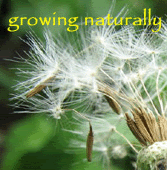Goldenrod continued
It is with mixed feelings every year that I welcome one of my favorite plants -Sweet Goldenrod. She makes a dramatic entrance to the world, for she is not one to ignore. I look forward to the day she bursts forth, and transforms the roadsides and fields with her delicious scent filling the air and her golden hue vibrating all that surrounds us.
When I think of seasons in New England, Winter comes to mind, followed by W i n t e r, a quick Spring erupting right into intense fieriness of Summer leading to Goldenrod season. I pray for a long calm Goldenrod season. It is my favorite. It is not the knowing that Winter is a looming, no no no! it is the peacefulness that comes with September. September, the month of introspection, returning to more studious pursuits now that the carefree days of summer are almost over. It is when I remember to give thanks for our rich seasonal abundance, our harvest. By then I am usually full with strawberries, peas and asparagus, wild salads, summer squashes, pesto, peaches, spinach, blueberries and raspberries and beginning to turn to tomatoes, potatoes, garlic, onions, apples, pears, pies, and winter squashes. Yet it is with sadness I receive her
announcement that it is the end of the growing season for I know that it is to be a full year until I taste those fat juicy Whately blueberries again.
The days of riding my motorcycle down route 47 are ending. I make one last pilgrimage to the fields, sleeveless feeling the late summer air on my arms watching the farmers working hard and sending them my thanks. Medicinally, she is way more than just a symbol of the end of the summer.
Known as Solidago canadensis in latin name, she is in the Composita (previously known as Asteraceae)family. “Solidago” comes from “solido” meanning to make whole or strengthen and to bring together. It brings to mind people carrying luminous stalks of goldenrod in place of candles, walking in solidarity to promote peace in difficult times. This luminescent colour also reveals her action as a mild antidepressant.
Goldenrod is perhaps the first plant to think of for upper respiratory catarrh, whether acute or chronic, for this it may be used with Red Clover, and Elecampane. As a gargle it can be used in laryngitis and pharyngitis. In the treatment of influenza she may be combined with other common herbs such as Elder, or Echinacea.
Goldenrod is one of the most misunderstood plants. Many allergy sufferers mistakenly blame her for their misery, but it is her sister, Ragweed (Ambrosia artemisifolia) who is usually the true culprit. In reality Goldenrod’s anti-inflammatory, anti-catarrhal action makes her a great aid for those suffering from allergies, especially cat allergies.
The bitter taste and carminative action of the tea, called Blue Mountain tea in the South, makes a great digestive aid useful in the treatment of flatulent dyspepsia.
Goldenrod may be used in cystitis, urethritis and the like, due to her anti-inflammatory and urinary antiseptic properties. She is also a bladder and kidney tonic.
As vulnerary it can be used to promote the healing of wounds. (she is commonly known as wound wort).
To make medicine, gather stalks at the time of flowering, which is between August and October, preferably from plants not quite blooming. To make Goldenrod tea, pour a cup of boiling water onto 2-3 teaspoonfuls of the dried herb and let infuse for 10-15 minutes. This can be drunk 3 times a day. You can sweeten with honey. To make Goldenrod honey fill a small jar with fresh Goldenrod flowers and cover with organic raw honey. Let sit for 6 weeks before using. You can also add a handful or fresh Goldenrod flowers to your favorite pancake mix. When using Goldenrod tincture take 20-30 drops 3 times a day.
One of my all time favorite poems by Mary Oliver (the greatest poet alive!!!) from her volume called “Twelve Moons.” is called
Goldenrod. Check it out.
skip to main |
skip to sidebar


Seasonal thoughts, gleanings and muddled musings
Welcome!

- Herbal Tonya here
- Grab yourself a cup of tea and enjoy.... I'm a 38 year old country living, crafty, homeschooling mama. I run a small herbal school out of our farm house.
my photos
Links to Things we're gonna makes
Books I am reading

Moon Phases
CURRENT MOON







No comments:
Post a Comment